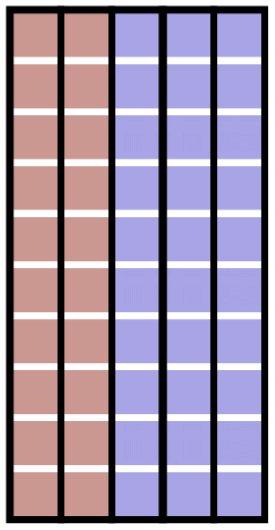Gerrymandering Explained
Scenario One - Fair and Compact Districts
Imagine a simplified state with a population of 60 percent Democrats (represented by blue squares) and forty percent Republicans (red squares), living on opposite sides of the state.
This state has enough people that it is granted five representatives in the house during this decade, thus there will be five voting districts.
“Neutral”—i.e. non-gerrymandered—redistricting would mean that there would be proportional representation reflecting the population. The districts in this state might look something like this chart where each black rectangle represents a district.
In this case, the parties of the elected representatives exactly mirror the parties of the population.
Blue wins three districts and red wins two.
